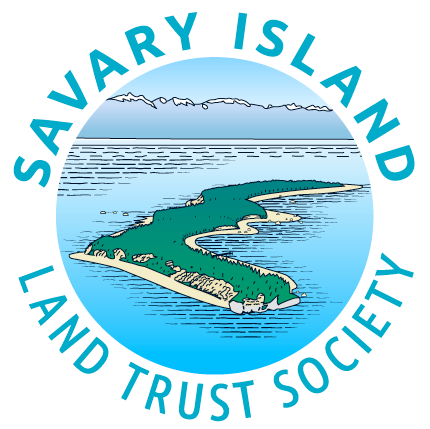Official Community Plan (OCP)
Links
Savary Island Official Community Plan
Savary Island OCP Background Information, November 1997, Golder & Associates
A Preliminary Assessment of the Groundwater Resources of Savary Island. January 1996. Also known as the Tupper Report.
Savary Island Official Community Plan Review: What are the limits to growth on this little sandbar?
by Liz Webster M.A., Executive Director, Savary Island Land Trust Society, 2023
In 1995 the Powell River Regional District proposed a bylaw to subdivide and develop a gated community on what is now known as the “Heart of Savary”. Most of the Savary community spoke against the bylaw at a Public Hearing on August 22, 1995 at Duck Bay and many cited concerns over groundwater. In response, the Regional District withdrew the proposed bylaw and opted instead to develop an Official Community Plan (OCP) for Savary Island.
The Principal Aim of the OCP is to maintain Savary Island’s unique character and rustic island lifestyle while protecting the island’s groundwater resources, its sensitive ecosystems and its unique biophysical characteristics. The document itself includes a description of the physical features and conditions of the island, as well as community concerns, expectations, and priorities.
The development of the OCP by the Regional District began in 1997. It was completed in 2007, ammended in 2010, and is now, in 2023, up for review. Typically, OCP’s are reviewed every 5-10 years, so this one is long overdue.
Groundwater and sewage are even more pressing concerns today than they were at the outset of the OCP process. Consider the following. In 1995, in advance of the proposed development of the Heart of Savary, islander David Tupper, in Association with Pottinger Gaherty Environmental Consultants Ltd., conducted research on Savary Island’s groundwater resources. According to what became known as the Tupper Report:
“Groundwater is the principal source of water on Savary Island. The groundwater resources are recognized by the community as a whole and the various levels of government to be a highly valuable resource that requires active and ongoing procedures for its protection, maintenance and assessment. This study was intended as a preliminary study of the hydrogeology of the whole of the island upon which future studies and planning can be based...There is a lack of data upon which to come to any definitive conclusions about the quantity groundwater present on Savary.”(Tupper 1996)
Further research on the baseline conditions of the island was undertaken as part of the OCP process in 1997. The Regional District contracted Environmental Consultants Golder & Associates to produce the document, “Savary Island OCP Background Information.” In Section 3.3.2 Sewage Disposal - Issues of Concern, theis report states:
“With only 27% of the total inventory of parcels on Savary Island developed, problems related to the disposal of septic effluent have already been observed (such as in the Keefer Bay and Indian Point areas)....given the potential development on Savary Island, the current lot density is too high in most areas to sustain conventional septic systems. Efforts should be directed towards reducing the total number of dwelling units that may be built on Savary Island and be serviced by conventional in-ground effluent disposal.” (Savary Island OCP Background Information, Golder & Associates November 1997:19-20)
In a letter to the Regional District on January 15, 1997 OCP Consultant, Derek Pratt of Planistics Consulting Stated that:
“Savary Island is a unique geographic entity in the Powell River Regional District in that it represents a finite ecosystem which due to the extent which the island has already been subdivided and developed is rapidly approaching certain critical development thresholds. In the absence of some form of land use controls soon, it seems inevitable the situation will quickly result in a “Paradise Lost” scenario. This is a conclusion that the Golder team is arriving at based on their environmental analysis.”
Will the place we all love dearly become Paradise Lost?
Since researchers concluded that Savary was reaching “critical development thresholds” nearly 30 years ago, there have been numerous building booms. The number of developed lots on the island has gone from the 491 reported in 1997, to approximately 1000 today (based on the number of propane customers). Exact numbers are not yet available and we hope to learn more as part of the OCP review process. Safe to say, development has doubled. At the same time, water pumping and solar technologies have advanced considerably, making water consumption easier all the time and still little is known about our groundwater resources.
I clearly remember the meeting with DL1375 developers at the Firehall in 1999 when Regional District Chair Bob Hagman asked the Savary Island Committee (SIC) directors, “Where, that is, at which beach, would you like to have the sewage outfall?” At least in his mind, this was the obvious solution to manage the extreme density of subdivision on Savary. The SIC directors, of which I was one, were both shocked and horrified by the question.
We hope that the qathet Regional District will report to the community about what has been implemented from the OCP in the last 23 years and produce updated information and a water study as part of the OCP review process.
Let’s become informed and work together so we can keep loving Savary for generations to come.


